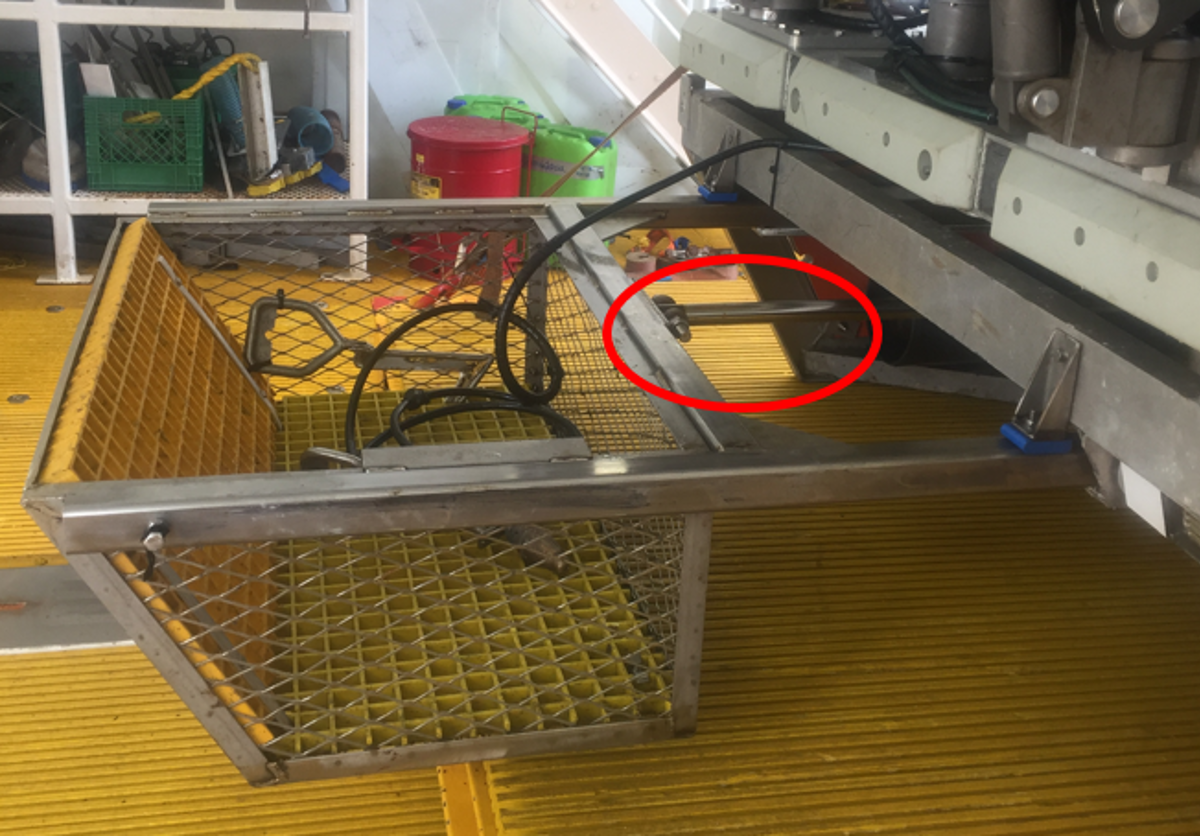Dropped object: first aid injury during ROV maintenance
- Safety Flash
- Published on 10 September 2018
- Generated on 20 December 2025
- IMCA SF 20/18
- 2 minute read
Jump to:
A tooling tray guide arm fell from an ROV skid rail slot and hit an ROV technician’s torso.
What happened?
He was beneath the ROV disconnecting the securing pin. Two further technicians had pulled out the tooling tray to allow access for the injured person to clear himself from underneath. While doing so, the guide arm dropped from the ROV skid rail onto the ROV technician underneath. The estimated weight of the tooling tray was 68 Kg. He was taken to the local clinic as a precaution for a check-up, as the vessel was in port at the time of the incident.
What went wrong?
- There was a requirement to remove the tooling tray before the next project.
- The technician was required to go underneath to disconnect the securing pin from the hydraulic cylinder that connects the tooling tray to the ROV skid.
- The skid was removed whilst he was underneath, and it fell onto him causing injury.
- The risk assessment performed was not task specific.
What were the causes?
- There was a lack of communication and poor risk perception demonstrated by the ROV technicians.
- The mechanism was not designed to be easily or safely removed.
What lessons were learned?
- There is a need for the attachment design for the clevis pin to be in a position that allows for access from the main deck in front of the ROV, removing the need for personnel to be underneath during removal.
- There needs to be higher hazard/risk perception for routine tasks.
What actions were taken?
- Improved the design (see image) eliminating the need for working underneath.

Related Safety Flashes
-
IMCA SF 11/17
22 May 2017
-
-
IMCA SF 11/17
22 May 2017
-
-
IMCA SF 12/11
1 November 2011
IMCA Safety Flashes summarise key safety matters and incidents, allowing lessons to be more easily learnt for the benefit of the entire offshore industry.
The effectiveness of the IMCA Safety Flash system depends on the industry sharing information and so avoiding repeat incidents. Incidents are classified according to IOGP's Life Saving Rules.
All information is anonymised or sanitised, as appropriate, and warnings for graphic content included where possible.
IMCA makes every effort to ensure both the accuracy and reliability of the information shared, but is not be liable for any guidance and/or recommendation and/or statement herein contained.
The information contained in this document does not fulfil or replace any individual's or Member's legal, regulatory or other duties or obligations in respect of their operations. Individuals and Members remain solely responsible for the safe, lawful and proper conduct of their operations.
Share your safety incidents with IMCA online. Sign-up to receive Safety Flashes straight to your email.


